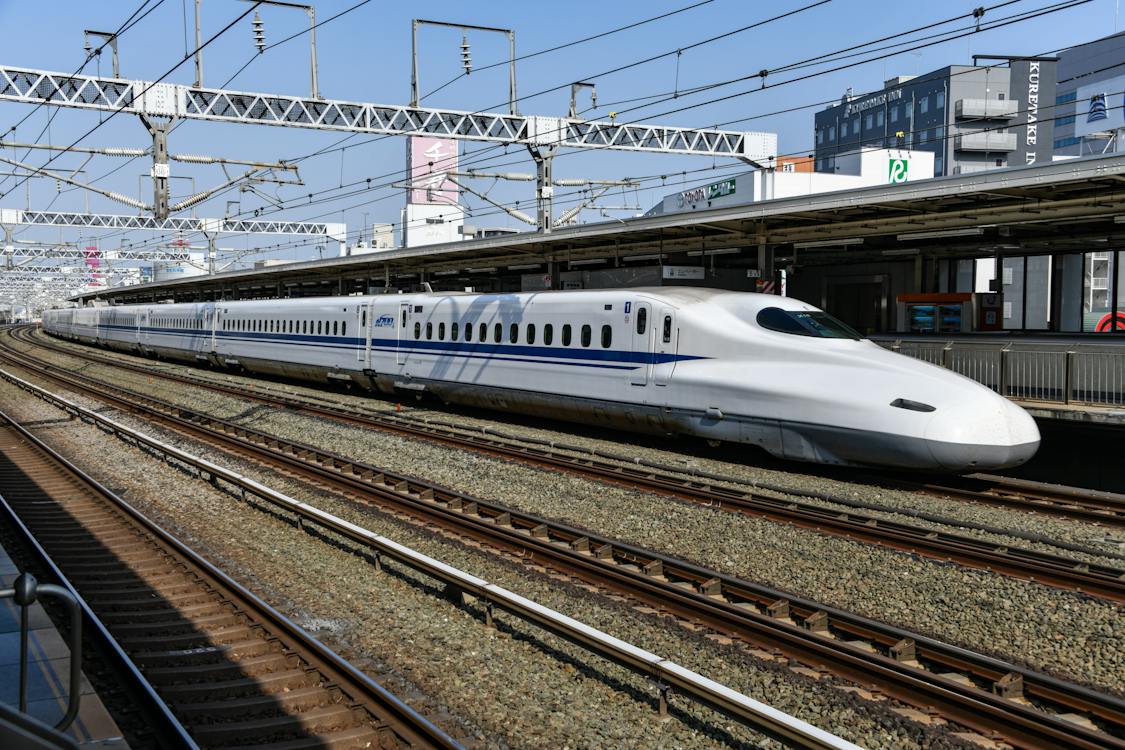The bullet train, otherwise known as the TōkaidōShinkansen in Japan, began its operation in 1964 and is the first high-speed rail system in the world. Today, the high-speed rail system is considered at the fastest ground-based commercial transportation, and it is possible that bullet trains will be able to run faster once Japan finishes the construction of the Chuo Shinkansen in the 2020s. Of course, like many other complicated inventions, the bullet train went through several modifications and improvements before it was officially opened for the public to use. One of those modifications is inspired by two birds, namely the owl and the kingfisher. Who thought about copying the natural features of these two birds and applying them to the bullet train? And what are those specific features that helped the train become what it is today? Let us find out as we dive into the amazing origins of the bullet train.
Origins of the Bullet Train
JR-West, a Japanese rail company that is considered one of those responsible for the development and conceptualization of bullet trains in Japan, have started researching on ways to minimize or reduce the noise that is produced by the high-speed trains. The one who was tasked to accomplish the research was EijiNakatsu, the general manager of JR-West.
From 1964 up to the late 1980s, it was known that Japanese bullet trains would often produce loud booming noises whenever they would exit a tunnel. This disturbing noise is said to be caused by the cushion of air that was building up at the front portion of the train, which was relatively flat-shaped back then. The cushion of air would then transfer to the pantograph, the apparatus that connects the electric train to the wires at the top, and this part of the train amplifies the loud sound.
After attending a lecture about birds conducted by an aviation engineer in 1990, Nakatsu realized that he could use some of the natural features found on birds on bullet trains, similar to how airplanes borrow specific features from the flying animals.
The first animal that he sought inspiration from was the owl. Owls are nocturnal animals who would often hunt at night. To keep them relatively invisible for their prey, owls have small saw-toothed feathers in their wing plumage. These feathers, known as “serration feathers,” allow owls to break up larger vortexes (the ones that cause loud noises in the air) by creating smaller vortexes through the gliding of the serration feathers while the owls are flying. The pattern of the serration feathers was then utilized to change the design of the bullet train’s pantograph and make them quieter. The new pantograph called the “wing-graph” was first installed for bullets trains in 1994.
While the noise amplified by the pantograph was solved, the sound that the front of the train makes still had no solutions. A few years after the creation of the wing-graph, Nakatsu sought inspiration for the nose of the train from the kingfisher, which has a beak that has a streamlined and sharp shape. The beak allows the kingfisher to dive down the air with little to no resistance because its sharpness cuts through the air. Before applying the features of the kingfisher’s beak on the bullet trains, JR-West and Nakatsu first conducted a research study to find out how sharp the train’s nose should be to reduce the noise that it produces. In the end, they found out that the needed sharpness of the train’s nose is closer to the measurements found on the kingfisher’s beak, although the size of the nose should be proportionate to the overall size of the train itself. With the help of the sharpened nose, the bullet train will no longer have a buildup of cushioned air at the front, as the air will most like escape faster by sliding outwards.
On March 22, 1997, the Shinkansen 500 train, which has the kingfisher-style nose and the wing-graph, was officially put into service. This train was able to run at 300 kilometers per hour, a speed considered to be the fastest for ground-based transportation during that period. This feat was achieved not because of the train’s state-of-the-art engine, but also because of the kingfisher-style nose that reduced the wind resistance of the vehicle. From then on, the technology utilized on the Shinkansen 500 has been utilized on bullet trains manufactured and used in several countries that have a high-speed rail system, including China, the United States, Russia, Spain, Sweden, and South Korea. The Chuo Shinkansen, a high-speed rail system that is currently under construction Japan, improves upon the biomimetic features of the bullet train by having a sharper and longer nose and a sturdier wing-graph. This system that connects Tokyo and Nagoya (with a planned extension to Osaka) is said to be available for public service in 2027.
